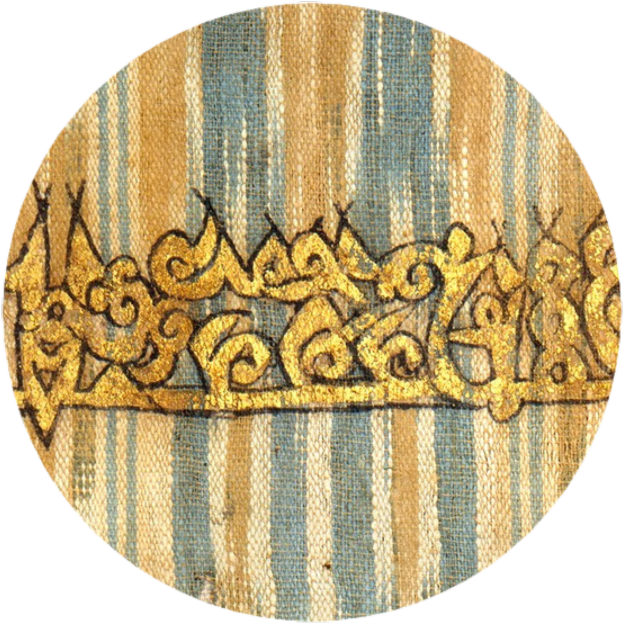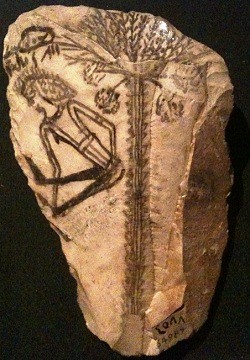One of the internal perceptive faculties that are proper to the living animal is fantasy [Gk. phantasia], which is the “common sense.” Its place is in the first chamber of the brain, where it receives into itself all that is conveyed to it from the totality of forms impressed on the five senses. Another faculty is positioned in the rear part of this chamber: this is the imagination [Ar. al-khayyāl], which is the form-producing faculty. It preserves what the common sense presents to it from the five individual senses, out of what remains there after the sensible objects are no longer present. It is well known that reception and preservation are the work of separate faculties. Think of water, which has the capacity to receive an imprint or an inscription and to take on any shape, but lacks the capacity to retain them (in a way that we will clarify later).
If you want to know the difference between the action of external sense generally, the action of the common sense, and the action of [the form-producing capacity of] the imagination, consider how you see the falling drop of rain as a straight line, and how you see the end-point of that cylindrical straight line as a circle. A thing cannot be perceived as a line or a circle until it has been looked into multiple times. External sense is unable to see it at two [separate] times, but sees it rather as it happens to be.
What is impressed on the common sense and passes away is perceived by the external sense as it happens to be. After it is effaced, its form remains in the common sense, which perceives it as if it were still there, just as when it happened to occur. The form-producing faculty sees an extended body which is spherical or straight, and this is something that can in no way be attributed to the external sense. The form-producing faculty perceives both matters, and gives form to them both, even when the thing itself no longer exists or is absent.
Then there is the faculty called "post-imaginative" with respect to the animal soul, and "cogitative" with respect to the human soul. This faculty is positioned in the central chamber of the brain, at the cerebellar vermis. Its characteristic function is that it combines and separates the contents of the imagination as it will. Then there is the estimative faculty, positioned at one end of the brain’s middle chamber, where it perceives the meanings [Ar. ma'ānī] which are not perceived through particular sensations. Such is the [above-mentioned] faculty present in the sheep, which determines that this wolf is to be fled from and that this lamb is to be cared for. It seems that this faculty is also what effects changes in imaginary objects, combining and dividing among them. Then there is the retentive, recollective faculty located in the hindmost chamber of the brain, which retains what the estimative faculty perceives in the way of meanings unperceived through particular sensations. The relationship of the retentive faculty to the estimative faculty is like the imagination’s relationship to the senses, and the relation of that faculty [the estimative] to the ma'ānī is like the relation of this faculty [the imaginative] to the sensible forms. These are the internal perceptive faculties of the animal soul.
On the soul (The Cure: Physics, book 6) I.5
If you want to know the difference between the action of external sense generally, the action of the common sense, and the action of [the form-producing capacity of] the imagination, consider how you see the falling drop of rain as a straight line, and how you see the end-point of that cylindrical straight line as a circle. A thing cannot be perceived as a line or a circle until it has been looked into multiple times. External sense is unable to see it at two [separate] times, but sees it rather as it happens to be.
What is impressed on the common sense and passes away is perceived by the external sense as it happens to be. After it is effaced, its form remains in the common sense, which perceives it as if it were still there, just as when it happened to occur. The form-producing faculty sees an extended body which is spherical or straight, and this is something that can in no way be attributed to the external sense. The form-producing faculty perceives both matters, and gives form to them both, even when the thing itself no longer exists or is absent.
Then there is the faculty called "post-imaginative" with respect to the animal soul, and "cogitative" with respect to the human soul. This faculty is positioned in the central chamber of the brain, at the cerebellar vermis. Its characteristic function is that it combines and separates the contents of the imagination as it will. Then there is the estimative faculty, positioned at one end of the brain’s middle chamber, where it perceives the meanings [Ar. ma'ānī] which are not perceived through particular sensations. Such is the [above-mentioned] faculty present in the sheep, which determines that this wolf is to be fled from and that this lamb is to be cared for. It seems that this faculty is also what effects changes in imaginary objects, combining and dividing among them. Then there is the retentive, recollective faculty located in the hindmost chamber of the brain, which retains what the estimative faculty perceives in the way of meanings unperceived through particular sensations. The relationship of the retentive faculty to the estimative faculty is like the imagination’s relationship to the senses, and the relation of that faculty [the estimative] to the ma'ānī is like the relation of this faculty [the imaginative] to the sensible forms. These are the internal perceptive faculties of the animal soul.
On the soul (The Cure: Physics, book 6) I.5





